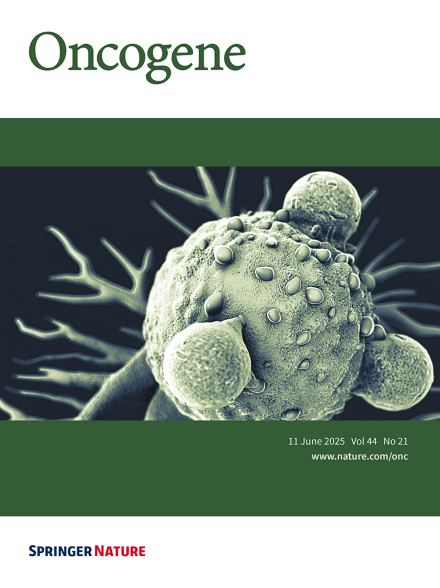Oncogene. 2025 May 23. doi: 10.1038/s41388-025-03447-4
Cancer-associated loss-of-function mutations in KCNQ1 enhance Wnt/β-catenin signalling disrupting epithelial homeostasis
Camille Berenguier1, Xingyu Chen2, Benoit Allegrini1, Hélène Guizouarn1, Franck Borgese1, Catherine Etchebest2, Olivier Soriani1, Raphael Rapetti-Mauss3
Affiliations
1iBV, Université Côte d’azur, CNRS, Inserm, Nice, France.
2DSIMB Bioinformatics Team, Université Paris Cité and Université de la Réunion, INSERM, BIGR, U1134, Paris, France.
3iBV, Université Côte d’azur, CNRS, Inserm, Nice, France. Raphael.Rapetti-Mauss@univ-cotedazur.fr.
Abstract
Ion channels are emerging as regulators of intracellular signalling pathway, yet the molecular mechanisms underlying this role remain poorly understood. KCNQ1, a potassium channel with tumour suppressor functions, restricts Wnt/β-catenin signalling, a pathway whose dysregulation, often driven by protein-altering mutations, is a hallmark of several epithelial cancers. Here, we identify loss-of-function (LOF) mutations in KCNQ1 across multiple epithelial cancers and elucidate their impact on Wnt/β-catenin signalling. Our findings reveal that cancer-associated KCNQ1-LOF mutations regulate the β-catenin pathway through a dual mechanism. First, they drive β-catenin transcriptional activity through triggering MET receptor, bypassing Frizzled/LRP6 receptor complex activation. Second, these mutations suppress the expression of key negative regulators of Wnt signalling, such as DKK-1, Wif-1 and NKD-1, leading to amplified pathway activation in response to Wnt ligand stimulation. This dysregulation disrupts epithelial homeostasis, as demonstrated by impaired crypt organization and increased proliferation in mouse colon-derived organoids. Together, these findings uncover an original mechanism linking KCNQ1 dysfunction to aberrant Wnt/β-catenin signalling, highlighting the role of ion channels in regulating epithelial signalling networks and tissue homeostasis.
DOI: 10.1038/s41388-025-03447-4

